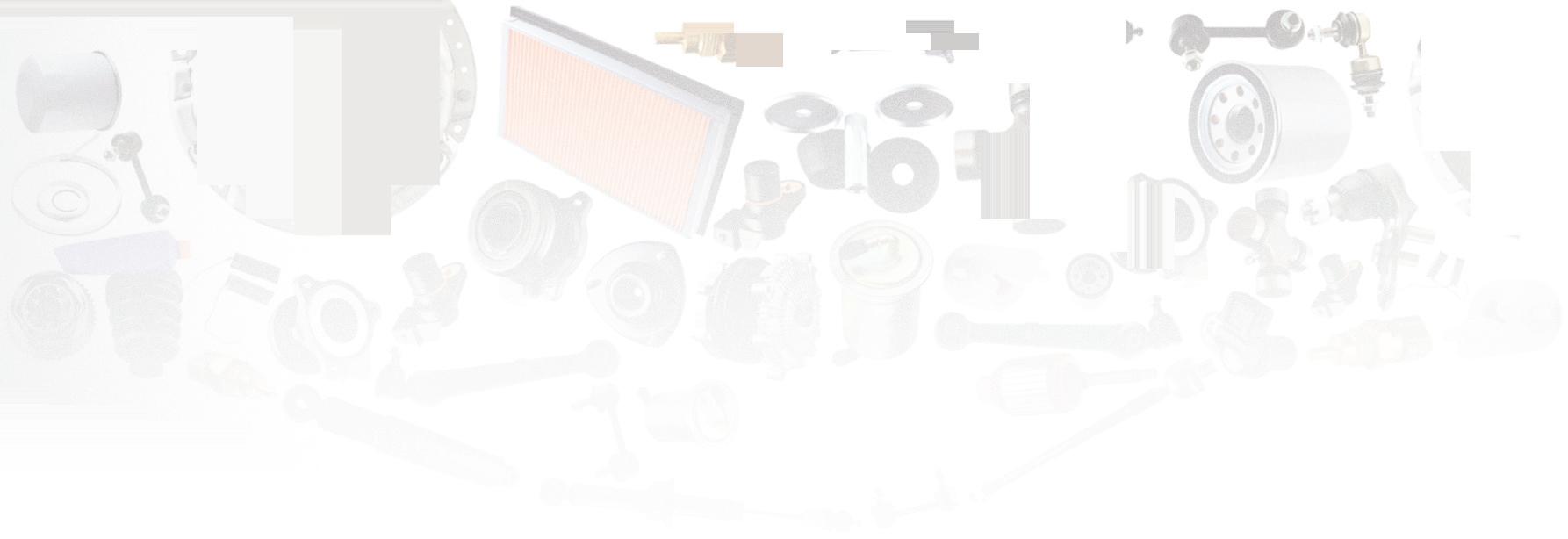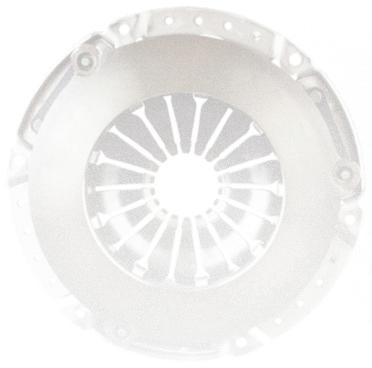










EV DIAGNOSTICS














EV DIAGNOSTICS





EVDIAG BOX + VCI INCLUDES ALL FEATURES OF THE MS909

EVDIAG BOX + 5-IN-1 VCMI INCLUDES ALL FEATURES OF THE ULTRA


• DETAILED BATTERY PACK DIAGNOSTICS



• STATE OF CHARGE & STATE OF HEALTH ANALYSIS
EVDIAGKIT







• SPECIALIZED BATTERY ANALYSIS VIA BMS
• DETAILED CABLE CONNECTION DIAGRAMS
UPGRADE YOUR MS909, MS919, ULTRA
KIT INCLUDES
EVDiag Box & Adapters for Specific Electric Vehicles to Perform Battery Pack Analysis. (Connects to MaxiFlash VCI or VCMI)
GROWING LEADERS WITHIN YOUR RANKS TO EXPAND YOUR REACH
PAGE 24

THE YOUNGEST WORLD-CLASS TECHNICIAN
MARCONI: QUIET QUITTING IN SHOPS

SHOULD YOU INVEST IN SHOP MERCH?


"YOU EITHER HAVE TRUSTED PEOPLE OR YOU DON’T.”






Adam Liu of M-Spec Performance grew from one to three shops by developing leaders from within.


In this business, downtime isn’t an option. Nobody knows that better than NAPA. That’s why we’ve built America’s largest network of parts and care, here to give you the support you need to keep your business firing on all cylinders. © 2022 National Automotive Parts Association LLC




Top technical trainers from across North America covering:
• Hands on training with real world diag routes

• Diag vehicles faster and more accurately





• Bill more hours every week
Dean Law
Owner of Law’s Automotive, Red Seal Technician, and Certified Technical Trainer
Adam Robertson Owner of Adam’s Auto Asylum, 37-year Technician, Certified Technical Trainer, author and radio show host



PRESENTED
Gary Smith

President of DiagNation, and Certified Technical Trainer specializing in advanced diagnostics





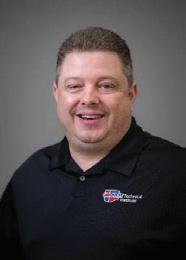
















Learn how David’s shop and thousands of his clients are growing sales by millions through:
• Building winning cultures
• Developing top techs and leaders in-house
• Attracting loyal customers who value quality service

David Rogers
President of APM and Shop4D, AMi Certified Trainer, and expert at creating winning cultures
• and how to hit them
• top operators and how they grew Chris

Shop owners Joe Mazur and Adam Liu discuss how shop owners can better building their businesses by developing leaders from within.
BY CHRIS JONESIn California, a group of childhood friends discovered that their passion for repairing and tuning fast cars could be more than a hobby.
BY NOLAN O’HARAEDITOR’S LETTER
A leadership lesson from legendary coach Bill Walsh
BREAKDOWN
Nathaniel Dillard talks about his remarkable feat
NUMBERS
The relationship between car count, ARO and revenue
ADAPT
Leading women in the industry discuss emerging technology
SHOP VIEW
Dave’s Pro Auto Service
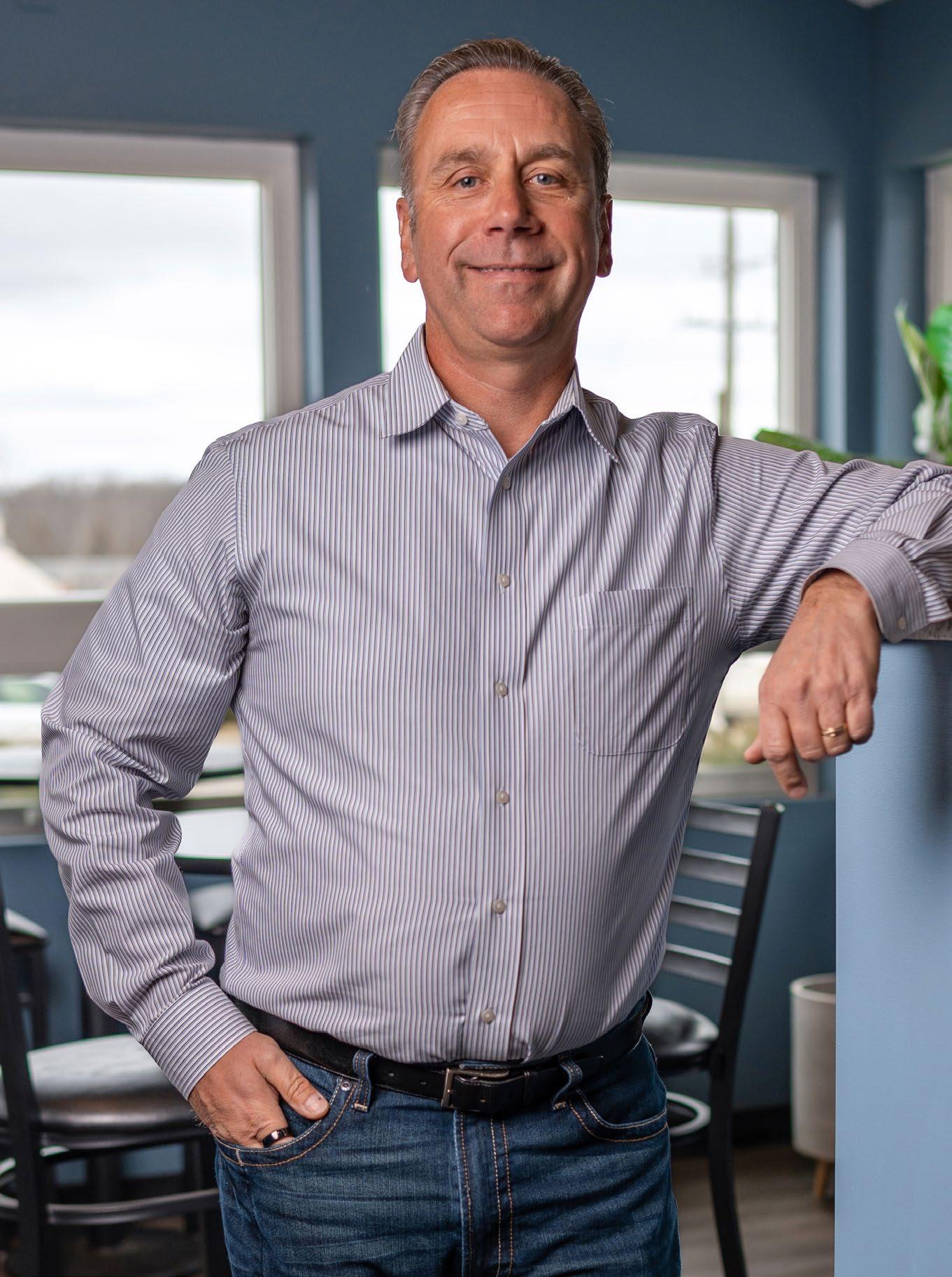
Williamsport, Pennsylvania
What to do when your team feels distant or complacent
JOE MARCONI
Shop owners discuss why they invested in EV chargers
CASE STUDY
How Girlington Garage uses branded shop merch
said
EDITORIAL
CONTENT DIRECTOR
Matt Hudson
EDITOR
Chris Jones
CONTRIBUTING WRITERS
Joe Marconi, Aaron Stokes, Alison Johnson, Nolan O’Hara, Tess Collins, Kimanzi Consable
PRODUCTION
SR. ART DIRECTOR
Jonathan Ricketts
ART DIRECTORS
Molly Van Brocklin
PRODUCTION MANAGER
Mariah Straub
AD SERVICES MANAGER
Jen George
SALES
VICE PRESIDENT AND PUBLISHER
Chris Messer 651.846.9462 / cmesser@endeavorb2b.com

ASSOCIATE PUBLISHER
Andrew Johnson 651.846.9459 / ajohnson@endeavorb2b.com
MARKETING STRATEGISTS (NATIONAL ACCOUNTS)
Marianne Dyal 706.344.1388 / mdyal@endeavorb2b.com
Chad Hjellming
651.846.9463 / chjellming@endeavorb2b.com
Bob Marinez 216.533.8747 / bmarinez@endeavorb2b.com
Martha Severson
651.846.9452 / mseverson@endeavorb2b.com
Kyle Shaw
651.846.9490 / kshaw@endeavorb2b.com
Dan Thornton
734.676.9135 / dthornton@endeavorb2b.com
Sean Thornton
269.449.0257 / sthornton@endeavorb2b.com
ASSOCIATE MARKETING STRATEGIST (NATIONAL ACCOUNTS)
Kenzie Verschoor
651.846.9472 / kverschoor@endeavorb2b.com

REGIONAL SALES MANAGER
Matt Harper
651.846.9551 / mharper@endeavorb2b.com
SENIOR MARKETING STRATEGIST (REGIONAL ACCOUNTS)
Melody Todd
651.846.9468 / mtodd@endeavorb2b.com
MARKETING STRATEGIST (REGIONAL ACCOUNTS)
Tim Hill
651.846.9454 / thill@endeavorb2b.com
CUSTOMER SUCCESS REPRESENTATIVE (REGIONAL ACCOUNTS)
Autumn Morey
651.846.9460 / amorey@endeavorb2b.com
ADMINISTRATIVE ASSISTANT
Ryan McCanna
EDITORIAL ADVISORY BOARD
John Miller, Fifth Gear Automotive; Doug Grills, AutoStream Car Care Center; Jimmy Alauria, 3A Automotive Service; Andrew Marcotte, American Pride Automotive; Bruce Howes, Atlantic Motorcar Center; Rob Choisser, Choisser Import Auto Services; Lucas Underwood, L&N Performance Auto Repair; Ryan Hillebrand, Urb’s Garage
HOW TO REACH US
ENDEAVOR BUSINESS MEDIA
571 Snelling Avenue North, St. Paul, MN 55104 tel 651.224.6207 fax 651.224.6212 web endeavorbusinessmedia.com
The annual subscription rate is $90 (U.S.A. only) for companies not qualified to receive complimentary copies of Ratchet+Wrench.
LETTERS TO THE EDITOR editor@ratchetandwrench.com
Opinions expressed in Ratchet+Wrench are not necessarily those of Endeavor Business Media, and Endeavor Business Media does not accept responsibility for advertising content.

organizational
for our team at Dynamic Automotive. There is no other publication out there that can compare to the depth of information we find valuable every day.”
Myers, CEO and Co-Owner, Dynamic Automotive, 4 locations in Maryland
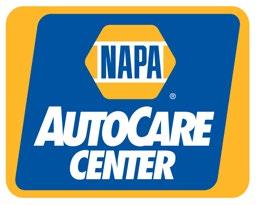


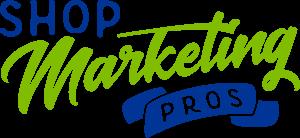





















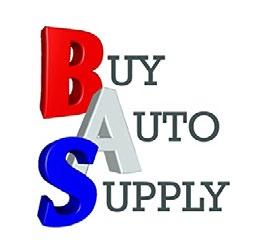
One of the most prolific head coaches of my childhood was Bill Walsh. As a kid watching football with my dad, the 49ers were typically the “4 o’clock game” for us. I remember the camera cuts to Walsh standing confidently on the sideline, chewing the flavor out of his gum as he fixated on the game in front of him. If you’ve seen Pete Carroll’s demeanor on the sideline, Walsh’s was similar. By the time I completed elementary school and transitioned into junior high, Walsh had gone from zero Super Bowl titles to four, with one back-to-back.
Walsh was a leader and innovator known for seeking out the best coaches for his staff. It was said that “Bill Walsh just wanted the best people. It didn’t matter if they were polka-dot or purple.” From the leadership of Walsh, 27 coaches can be traced back to him (22 are second- and third-generation coaches). Of those 27, 11 led their teams to Super Bowl appearances with seven taking home the Lombardi Trophy, most recent being Andy Reid (a second-generation coach through Mike Holmgren, who won one Super Bowl in three appearances).
The “so what” of the story is that great leaders understand the need for developing the right people in their sphere and then when the opportunity presents itself, allowing those leaders to blossom.
In the same way, auto repair shop owners need to have the mentality of professional football coaches in the way they pore over their people and look for ways to grow them, create opportunities for them and inevitably place them in “head coach” roles in new shops as they expand. In turn, those leaders will develop leaders under them who will inevitably move on to the next shop and continue the success handed down from the top. Instead of a coaching tree, you’re building a leadership tree of highly competent people who can stay on brand, execute the vision and replicate themselves to create even more success for your shop.
You’ll see this principle at work in our feature story, “How to Grow Leaders for Multi-Shop Expansion” (p. 24) In it, we

spoke to a pair of shop owners, Adam Liu of M-Spec Performance in New York City and Joe Mazur or Mazur’s Total Auto, outside of Detroit. Both spoke of the value of developing leaders in each position within the shop to allow them to be able to 1) work on highlevel business development and 2) to lead the way in expansion efforts by modeling their leadership and training new leaders under them. In doing so, they’re able to create more opportunities for upward mobility for everyone involved.
Circling back to professional football, did you know that NFL jerseys sales brought in over $2 billion in revenue in 2021? Merchandise is one of the league’s largest sources of revenue. For shop owners, merchandise sales doesn’t have the same flair, but selling branded apparel and swag can be a strong marketing strategy.
In “Is Shop Merch Worth the Effort?” (p. 34), you’ll meet Susan McGath of Girlington Garage in South Burlington, Vermont. She talks about her shop’s decision to invest in shop merchandise and how customers have taken to it. They have an array of apparel and other items.
Finally, we asked a few shop owners their take on EV charging stations. These shop owners have installed them and have been using them within their businesses and they talk about why they did it and how they’re making them work. The future is now.
CHRIS JONES, EDITOR CHRISTOPHERJ@ENDEAVORB2B.COM

Every leader leaves a legacy, and it’s passed down from one to another
Our 10AP Series offers the convenience of wide or narrow installation wrapped up into one configurable package. This durable, safe, and reliable car lift features an expandable top beam and BI-METRIC™ arms to suit virtually every vehicle lifting requirement – symmetric or asymmetric. The 2-in-1 design gives operators the option of loading vehicles either symmetrically (centerline of vehicle at column) or asymmetrically (centerline of vehicle behind column). The simple, yet highly sophisticated is sure to keep operating costs low and productivity high. Check out the full line of 10AP lift series at bendpak.com or call us at 1-800-253-2363.

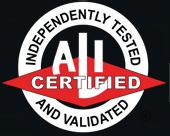


At 23-years-old, Nathaniel Dillard is a world-class certified technician with years of industry experience already under his belt. Though many were pushing Dillard toward going to college out of high school, one local shop owner he worked for saw potential in him.
Dillard, who grew up in Martinsburg,West Virginia, now works as a research and development contractor at the North American division of Akka Technologies, a European company that offers engineering consulting for the automotive industry.
His first experience with automotive repair was around 9 or 10 years old, when his father enlisted his help with repairing a fuel pump on his vehicle. He said he needed “tinier hands than his,” Dillard remembers.
His interest in working with cars only

grew as he matured, and after leaving high school, he immediately pursued the automotive field.
He started as a lube technician at a dealership initially after finding a job posting, and then went to work at an independent shop. It was there that he met Wallace Parrish: his mentor and owner of ZZ Auto Service Center.
“I impressed him, because I was working in the field I was at 18,” Dillard says.
When he began working for Parrish, Dillard was still unsure how committed he was to further pursuing his career as a technician, with many around him pushing him toward going to college.
It was Parrish that encouraged Dillard to work toward obtaining the ASE certifications that helped get him the job he has now, even going so far as to help fund the test fees.
“He’d seen the potential in me and told me to keep pushing for greatness,” Dillard recounts.
When he made the decision to pursue worldclass certification, much of it was material he’d already worked with in real life, but much also required studying and preparation. He says that he introduced himself “slowly into those subjects” by “studying up and researching.”
“A lot of is hands-on knowledge that you would acquire, but a lot of it is also just understanding the concepts and applying them,” he says.
His advice for others that are pursuing ASE certifications is to seek resources online, especially official ASE practice tests. If someone fails a test, he advises to study more and try again–Dillard says he failed some tests up to four times before passing.
Dillard cites his time at the shop as the most impactful time of his career. Parrish offered him support and confidence, and in spite of all the doubters, Dillard saw a path to carve for himself toward what he always wanted to do.
Just a few months ago, he stumbled upon a paper from a mock career presentation that he performed at 15.
“I remember one of the questions it asked was,‘What would you like to do after graduating high school?’ I said that I wanted to be an R and D electrical contractor … I did end up getting that job, and I think that’s really cool,” he says.
As a research and development contractor, Dillard now encounters many college students interested in the industry through a tech student program at Akka Technologies, and often ends up becoming a mentor for many of them.
The most important piece of career advice he has received, and that he gives to any technician entering the field, is to keep up with emerging technologies. He remembers how his background in working on computers with his father gave him an advantage when he first started as a lube technician.
“I was able to apply that (background in computers), being the new guy in the shop (and) already having an understanding of electrical systems in cars that are already becoming more and more electrical, versus mechanical,”he says.“And that has allowed me to keep ahead in my field.”
For Dillard, that’s always what his driving motivation to work in the automotive field has been: the opportunity to work with emerging technologies and being on the cutting edge of new products.
“I really enjoy getting to see the product before the rest of the world,” he says. “I really enjoy problem solving situations that I know for a fact have never occurred in the world before.”
Though Dillard enjoys a fulfilling career today, he confesses that the doubt he faced was one of the hardest parts of getting there, with many around him pushing him to go to college and pursue other paths.
“There’s a lot of negative connotations, even today, when it comes to a skilled labor position,” he says. “We’re starting to understand that not everyone needs to go to college, but there’s still some sort of a negative light shined on you if you haven’t. I think that’s not necessary.”
He’s more than satisfied in the position he holds now, being able to provide for himself while doing what he loves. He says he hopes to continue work in the research and development field for the foreseeable future.
“I think you can have a really good career and a really good life outside of work in this field,” Dillard says.
“We’re starting to understand that not everyone needs to go to college, but there’s still some sort of a negative light shined on you if you haven’t. I think that’s not necessary.”
Nathaniel Dillard
ASE World-Class certified technician
The National Institute for Automotive Service Excellence (ASE) has announced that the month of June 2023 has been chosen as Automotive Service Professionals Month (ASPM), according to a press release.
ASE has created a special logo to be used by “companies, organizations and individuals” to identify vehicle service professionals during the month of June.
The logo and other “ASE digital assets” can be downloaded online at no cost.
The ASE intends for June to serve as a time for “recognition events, special programs and other celebrations.”
The Biden administration has announced plans to prioritize in-need areas for the installation of electric vehicle chargers as part of its $2.5 billion electric vehicle program, Bloomberg Law reports.
The U.S. Department of Transportation is now accepting applications for “underserved and disadvantaged” areas that would benefit the most from charging stations. They will be due by May 30.

The first increment of funding, which comes from the 2021 infrastructure law, will make “up to $700 million available for chargers and alternative fuel.” The law also includes an additional “$5 billion formula pro-
gram to install chargers for electric vehicles along highways.”
President Biden has planned on half a million electric-vehicle chargers being offered nationwide by 2030. Officials have said that the “equity-focused grants” are intended to help both urban and rural areas have access to these charging stations.
Part of convincing Americans to make the switch to EVs is making charging stations “visible and accessible in our communities,” said Energy Secretary Jennifer Granholm in a statement.
“So many of the people who could theoretically gain the most from the gas and diesel savings of having an electric car are those who will be most impacted by the sticker price and by the lack of charging infrastructure,” Transportation Secretary Pete Buttigieg stated in an interview with Bloomberg.
According to a J.D. Power 2023 U.S. Customer Service Index (CSI) Study, electric vehicle owner satisfaction is 42 points lower than that of internal combustion engine vehicle owners. It’s the first time in 28 years that the survey has seen a year-over-year decline in satisfaction, said Reuters.
Hampered by recalls—which are more than double for EVs—the study indicated that consumer dissatisfaction decreases by 23 points when the repair is based on a recall.
"As the electric vehicle segment grows, service is going to be a 'make or break' part of the ownership experience," said Chris Sutton, vice president of automotive retail at J.D. Power. "The industry has been hyperfocused on launches and now these customers are bringing their electric vehicles in for maintenance and repairs."
Along the lines of maintenance and repair, EV customers are faced with longer service waits due to labor and parts shortages, which adds to their growing frustration.
The Auto Care Association is going global with its efforts to support the Right to Repair. According to a statement released on its website, the ACA is aligning with advocates around the world through a new position statement outlining the movement’s core beliefs and reiterating the intended outcomes expected of Right to Repair legislation.
“Auto Care Association and associations around the globe are aligned in preserving the owner’s choice for vehicle repair,” said Bill Hanvey, president and CEO, Auto Care Association. “This statement represents a herculean effort to protect our industry and the rights of individuals around the world. Vehicle owners deserve the right to maintain and repair their vehicle using the repair location of their choice.”
The automotive aftermarket within the United States performs 70% of after-warranty





















It protects my customers and our shop. The benefits are excellent from training to discounts on services that we use. ”
JASHIEL ESPIRITU




Gresham Automotive, Gresham, OR TechNet Member Since 2021































Level up your shop and get access to exclusive business and marketing solutions, including motorist programs like Nationwide Warranty, Roadside Assistance and Road Hazard Tire Protection.



Scan the QR code or visit technetprofessional.com/membership


repairs. Without legislature to uphold it, independent repair shops could be prevented by automakers from providing vehicle repair and maintenance due to a lack of access to wirelessly transmitted vehicle data.
According to the ACA, Australian and South African advocates have helped consumers in their countries to retain their right to repair their vehicles.
According to a new study by Grand View Research Inc., the automotive cyber security market has continued to expand and is expected to grow to $14.2 billion by 2030, according to a press release.
With features such as “remote start, online access, and intelligent voice assistants” being seen more frequently in cars and electronic vehicles having “increased connectivity and intelligence,” manufacturers will have to address securing the data these vehicles create.

Alongside a growing need for cyber security due to advancing technology, Grand View Research also cites “integrated car software, government standards and the imposition of mandatory cyber security requirements” as causes for the automotive cyber security industry becoming more relevant.
As the data coming from vehicles becomes more complex and valuable, Grand View Research also noted that the
utilization of external cloud services to hold such data could “provide a highlyreliable technology.”
North America was revealed to be the second-largest market in the cyber security field, and the self-driving vehicles that are being manufactured in the country are signs of a further growing cyber security market there.
A new Christian Brothers Automotive will open next week in Buckeye, Arizona, according to a press release.
Located at 23385 West Yuma Road, the shop will be owned by local residents Stacey and Pat Jarrett and is slated to open on March 13.
The two have previously worked in corporate roles when Pat’s experience in “franchise ownership and sales” led him to Christian Brothers Automotive.
Stacey stated that they have “always aspired to work with people” and hope to “take an active role in our community” with the new store.
Donnie Carr, president and CEO of Christian Brothers Automotive, agrees, having said that the Jarretts “will be great resources within their community.” He believes they will serve the brand adequately, stating that owners like them “are key to maintaining the people-first approach” advertised by the company.
A probe has been opened into Tesla Model Y vehicles by the National Highway Traffic Safety Administration (NHTSA) due to reports of the steering wheel completely detaching, Reuters reports.
A preliminary investigation has been opened into 120,000 Tesla Model Y vehicles after two reports were received of the steering wheel falling off while driving. According to the NHTSA, the vehicles in the two incidents were 2023 model years with low mileage.
One complaint was from a parent in New Jersey, who had just bought the vehicle in late January. Only five days later, as it was being driven down Route 1 South in Woodbridge, New Jersey, “all the sudden” the steering wheel fell off.
The New Jersey parent took to Twitter to recount the incident, having stated they were “lucky there was no car behind and able to pull on the divider.”
The vehicles were reportedly given to consumers while missing “the retaining bolt that attaches the steering wheel to the steering column.”
The NHTSA said the steering wheels came off “when the force exerted on the steering wheel overcame the resistance of the friction fit” of the vehicle that “maintained the connection between the steering wheel and the column splines” until it was separated during operation.
Does higher volume lead to increased sales?
BY CHRIS JONESIs it better to push out cars quickly or slow the pace and be thorough? While a high car count is great, a lower car count with a careful eye may be better. The Ratchet+Wrench Industry Survey found more cars meant a lower ARO and closing ratio and fewer opportunities spotted. While a higher volume of cars produces some revenue, slowing the pace could generate more profit.
CAR
300 ARO over $1,000 5%

Closing ratio of 90% or higher
Closing ratio of 90% or higher
Opportunities found above $1,000
Opportunities found above $1,000 ARO over $1,000 23% 23% 32%










 JUMP START / ADAPT
JUMP START / ADAPT
The Women in Auto Care Leadership Conference was held Feb. 27 through Mar. 1 in Palm Springs, California. Women in Auto Care is a community of the Auto Care Association. The theme this year for the community’s annual event was “Resilient and EmpowHERed,” and this was exemplified through the conference’s various speakers and their respective sessions.
One such session revolved around the topic of being empowered by information. It was a panel called “Emerging Vehicle Tech: What You Actually Need to Care About.”
The panelists were Susan Starnes of NAPA Auto Parts, Meagan Moody of ZF Aftermarket and Carolyn Coquillette of Luscious Garage (now Earthling Automotive) and ShopWare. The panel was moderated by Stacey Miller, vice president of communication for the Auto Care Association.
Although conference attendees came from across the automotive industry, the purpose of the panel was to shed light on aspects of vehicle electrification and ADAS that impact all corners of the industry.
According to data from a slide deck featured alongside the panelists, there are only 20 moving parts in an EV drivetrain versus 200 in a traditional drivetrain, and there are approximately 15,000 total parts in an EV versus 30,000 total parts in a traditional car.
To understand the full impact of these elements and more, all of the panelists agreed that seeking out information and educational opportunities is key.
As the vice president of emerging markets for NAPA Auto Parts, Starnes works with elements of new vehicle technology. On the panel, she pointed out that you simply don’t know what you don’t know.

“For EVs and ADAS really, it’s about education and understanding,” Starnes says.
Starnes mentioned that at NAPA, their team is working to navigate and get ahead of emerging technology. This includes developing and understanding of what the specific training needs are for these newer vehicles.
Keeping all of the change that’s happening in mind, it was also pointed out on the slide deck that the average age of vehicles on the road these days is 12 years. Moody pointed to another important detail to consider.
“If our cars aren’t failing earlier, then we’re probably going to tend to keep our cars longer,” Moody says.
Moody noted that there will continue to be big pockets of the country, such as California, that will adopt electric vehicles fervently. But the rural areas of the United States will not take on these new vehicles at the same rate and they cannot be overlooked.
Coquillette opened Luscious Garage 16 years ago and started working on hybrid cars before they became more mainstream in the car parc.
As for EVs, she says on the panel that the industry is still in the early days of seeing them break. She says that tires and some undercar services are a couple of examples of EV repairs being conducted.
“Our expectation with EVs is that we’re going to have to be patient and learn more about them,” Coquillette says.
Considering many new electric vehicles are still under warranty, Coquillette says independent shops still have an opportunity for service because people will look for alternative options when they are unhappy with a dealership. She says access to information and parts is important in these repairs and it’s helpful when EV automakers are cooperative with information.
As more change comes with the technology on new vehicles, Coquillette says the af-
termarket has the opportunity to step up, lean in, learn more and provide solutions.
“Self-driving cars aren’t going to be self-fixing cars,” Coquillette says.
On the topic of fixing, all of the panelists agreed that proper tools are crucial to understanding emerging vehicle technology. Starnes says on the EV side, this involves a lot of safety tools such as gloves and diagnostics equipment. For ADAS, it’s about calibration and making sure you have the right machine for the vehicle in question.
Coquillette says that the kinds of highvoltage tools used in hybrid repair could be transferrable to some services being conducted on EVs. Moody mentioned the importance of recognizing the prevalence of things like over-the-air updates that have become more commonplace on newer vehicles.
The panelists also discussed the topic of liability when things go wrong with repairing technologically advanced vehicles. Starnes says that it may take a few court cases to determine the best courses of action going forward with this complex topic.
Moody says that one roadblock to consider is that there are some A-level shops doing great work with these vehicles, but there are many B and C level shops out there that may not be as up-todate on electrification information, which may impact their repair approach.
Coquillette says manufacturers need to make cars that are safe to work on and that, “the car needs to be serviceable, and the car needs to be safe.” She says the burden placed on service providers to conduct safe repairs is not new and it will separate the shops that are able to do it well and those that are not.
“This is not our first rodeo,” Coquillette says.

 BY CHRIS JONES PHOTOGRAPHY BY DAVE COHEN
BY CHRIS JONES PHOTOGRAPHY BY DAVE COHEN
Dave Bausinger opened Dave’s Pro Auto Service in 1996 to offer “quality service at a fair price.” Since then, he has grown the business from a singlebay service station to an eight-bay, 4,000-square-foot shop, changing locations four times along the way as better properties emerged.

In January, Bausinger handed the reins over to his service advisor, Stephannie Maneval, who purchased the shop from the 67-year-old owner who’s transitioning into retirement.


“I started working for Dave six years ago. I worked my way up and then he decided to sell it to me when he was retiring. So, we’re now a woman-owned business,” says Maneval.
Once inside, guests check in with a service advisor and may wait on their vehicles in the waiting room, which has a Keurig and a popcorn machine along with assorted drinks and snacks. Those who don’t wish to wait can request transportation.
“We offer a free local shuttle ride,” says Maneval.
The shop’s eight bays include five lifts, two heavy-duty lifts and an alignment rack. Bausinger’s willingness to invest in equipment means the techs always have the most up-to-date equipment.

“We’ve got a pretty good selection of specialty tools that we bought over the years, and we’ve got three different scanners we use on a daily basis,” Bausinger says.
One of the keys to its strong customer service is consistency within the bays. The shop has little turnover and high tenure, with its most senior techs having been on the payroll between 10 and 15 years and his latest hires on staff since 2019.
DAVE’S PRO AUTO SERVICE
Owner: Stephannie Maneval
Location: Williamsport, Pennsylvania
















After Pepsi-Cola’s aggressive marketing campaign in the early 1980s, Coca-Cola made a bold move. In April 1985, it changed its highly successful 99-year-old recipe and launched “New Coke.” What happened next became legendary, as New Coke was a flop. Consumer backlash was off the charts. Coca-Cola received over 40,000 letters and phone calls from loyal consumers expressing their disappointment. Just 79 days later, Coke brought back the original formula, renaming it “CocaCola Classic.”
Some people go to work each day with great enthusiasm and believe they can change the world. But then, others anticipate each workday with feelings of despair. These employees do the bare minimum; just enough to keep their jobs and go unnoticed. They are called quiet quitters.
While quiet quitting may be the latest catchphrase, it’s not a new workplace disorder. We’ve called them disgruntled, disengaged and even toxic in the past. But who’s responsible for this behavior? Is it the employee? Or is there a deeper problem brewing in the workplace?
As a young technician in the mid-1970s, the shop owner was typically at the top of the pinnacle. It was common back then for a boss to run his company with the mindset, “my way or the highway.” Was it wrong? Perhaps. Thinking back, I don’t think we clearly understood or appreciated the role we played in the workplace or how we fit into the company’s structure. We accepted things the way they were, unlike employees today. I also believe we felt we couldn’t change how things were.
Today, it’s a lot different. There has been a shift in the workplace. Societal changes, the internet and social media have changed
our exposure and heightened our awareness of the world and the issues that confront us daily. Today, employees of every generation believe they should have a voice in the company’s decisions and direction. It’s important that their opinions count and that their job role has a purpose. Of course, earning a decent living is top of mind, but as always, not the prime motivator. At the top of what’s most important is the workplace environment and the employee experience. When employees lack the experience they crave, they become disengaged, leading to what we call quiet quitting.
Lack of trust in leadership is another factor in quiet quitting. Shop owners and managers must communicate what their employees can expect from management and not only what management expects from them. Consistency in the message and following through on promises contribute to workplace morale. After all, if you can’t trust the message, you will not trust the messenger.
Some people will excel in any work environment. However, they are the exception, not the rule. If you want a team of employees where everyone is pulling in the right direction, you should consider the needs and opinions of your employees.
If you are concerned that understanding your employee’s point of view and acting on it is giving up control of your company, don’t be. Earlier, I referred to shop owners from years back. Most of them had a good business but not a great business. The reason was that they were the business. Growth was difficult because it was dependent mainly on their abilities and talents. This one fact alone causes a business to plateau. However, when a business combines different points of view and strategies from the team, greater growth is possible.
Lastly, there will always be employees who won’t be happy no matter what you do. If you are confident that you have done all you can to help a quiet quitter, the only hope at that point is for the employee to look within themselves, which may be difficult for most people. Instead, focus more on what you can do. Look within yourself to ensure you are doing everything possible to create an amazing employee experience. Your goal must be to create happy employees. We’ve all heard the expression, “Happy employees create happy customers.” Well, they create happy employers, too.
Marconi has more than four decades of experience in the automotive repair industry. He is the former owner of Osceola Garage in Baldwin Place, N.Y., a business development coach for Elite Worldwide, and co-founder of autoshopowner.com.

j.marconi@eliteworldwide.com
ratchetandwrench.com/marconi
When Joe Mazur wanted to test the readiness of his shop leadership team before adding another location, he packed his bags and left Michigan for Florida and allowed his team to run the store on their own for a month.

“I had a super strong manager that had come to work for me. He had only been with me a couple of years, but he could pretty much run the day-to-day operations,” Mazur says.
Upon returning, Mazur observed that the store did well—performing at an 85% to 90% level while maintaining sales, profit and not upsetting customers.
He says while he and his team identified a few holes, he was happy overall and his concept was proven—his people were ready to operate another store.
“If you can’t leave your store and check in once a week for a month and have that store stay where you need it to be, then don’t even think about opening a second store,” Mazur says.
When Mazur opened his second location of Mazur’s Total Automotive, an acquisition, he trusted that his manager knew the business, was comfortable running the shop and was all in on the shop’s philosophy. Given that it was an acquisition, having the right person spearhead it was everything.
“We took over an existing shop and that was really where my trial by fire started. I learned a lot during that time
and it reinforced how important people are—people you can trust, who understand not only your processes and procedures but ultimately your why of why you do business,” says Mazur.
He calls it one of the toughest times of his life; harder than opening his first location. It’s an experience he can look back on and laugh at today in light of how much time it took to go from shop two (2012) to shop three (2020).
“I joke around that it took me eight more years to go ahead and do store three because of the trauma,” laughs Mazur, who has opened three more shops between 2020 and 2022.
Mazur says his approach to shop leadership is selecting from within his ranks from those whom he has trained and brought up through the business. Once trained, that person then trains their replacement. Once a new store opening becomes apparent, they begin moving personnel to the next location.
“I want to have a manager and a lead technician that I can move (between stores). If I only have to choose one, I’ll take the store manager. And our business model is quite a bit different ... We spend a fair amount of time training and mentoring our managers so that they get it and carry on what we do,” Mazur says.
He says while the “each one, teach one” method yields the results he’s looking for, he’s flexible with managers who wish to remain at their current shops.
“Each manager or leader is different. If I have a store manager that is comfortable in the store and likes where he’s at and doesn’t want to move, well I’m not going force him to move, but he’ll help to train the manager that might move on and go to the next store,” Mazur says.
The ideology is the same regarding promoting lead technicians into new stores.
Becoming a multi-shop owner for Mazur isn’t about pride or even largely about the financial benefits, but about being an economic source for his team. He says developing leaders provides more opportunities for people who want to come up the ranks and have a career path with Mazur’s Total Automotive.

“It’s my responsibility to keep growing the company so that there are opportunities for these people because otherwise somebody is going to plateau, and if I don’t have somewhere for them to move to, they’re going to go somewhere else,” Mazur says.
Auto repair shop owner Adam Liu of MSpec Performance has three shops in Queens, New York. An industry outsider before becoming a multi-shop owner, Liu says he learned to effectively build his business through his hardships and those
lessons taught him what to look for in his managers.
“You have to have a solid foundation, and that foundation is the culture you cultivate in the business,” says Liu.
Liu initially built the shop’s personnel through a combination of Craigslist ads and posting on forums when forums were popular.
“We grew it organically in that matter, but at the same time, we had no idea what we were doing. We didn’t know what to charge. We didn’t know how to make money. We didn’t know the importance of a lot of other things like appearances, and a lot of little nuanced things,” Liu says.
After an a-ha moment, he added a second location after five years in his first. Admittedly, he doesn’t recall the exact moment when it all came together for him but believes it happened at a WorldPac event.
“I ended up going to a class. I don’t remember exactly what class it was, but it was a discussion of simple, basic stuff that every shop owner should know, like parts margins, how to sell a ticket. And I was the only person up front and so I ended up learning a few things in that class, implementing them right away, saw that there was a big difference,” Liu says.
After witnessing the return on investment from the applied knowledge taken from the class, he got coached through Transformers. That’s where the idea of going multi-shop came from.
“I remember going to a Ratchet+Wrench conference. Greg Bunch reached out and was like, ‘I’m forming this group that is for multi-shop owners. If you want to be a multi-shop shop owner, then you should come.’ Once I started getting those meetings and networking with other multi-shop owners—seeing the potential in the industry, the potential in what we could do, eventually realizing the potential that we could provide for our team, the kind of growth path that we could have for our team—that was a motivating factor,” says Liu.
Today, Liu has three shops in New York City, where he says space is constrained and he stays plenty busy. He’s able to focus on growing the business because
he has managers installed who believe in the mission and vision of the company. He says letting go enables him to do what he does best, be a visionary leader.
“I do not like to be a micromanager at all. I love being more of a macro person,” Liu says, pointing out that communication and understanding take on a different meaning for New Yorkers.
“We have a very different way of speaking to each other, I guess maybe it’s a shop thing, but we’re also from New York, so we’re very blunt when we talk,” he says.
Communication is to the point, leaders need to have thick skin, and he takes an extreme ownership approach, which is inspired by the Jocko Willink and Leif Babin book of the same title, which he encourages his team to read.
“One of the things I wanted to tell my guys is I’m 100% trying to grow people beyond me and I want to make (fewer) decisions. So, having written systems and processes and having them read them and use them is important,” Liu says.
When it comes to installing managers in new locations, “you either have trusted peo-

ple or you don’t,” and if the latter, you’ll need to look at your structure, your training or your processes and figure out why. And just because a manager makes errors doesn’t mean he’s the wrong guy. Continue to teach.
“I give a lot of freedom to my leaders to also make mistakes, too. I don’t necessarily chastise anybody for making mistakes. If it’s something that they should have known, then we’ll have a conversation about it. If they make a mistake that wasn’t anything that anybody had covered, and they made a decision, that’s fine. I like when people make decisions, especially if they’ve gone through the right kind of process,” Liu says.
What matters most to Liu is successfully staffing his leadership positions in each store with take-charge type of people who require no hand holding, feel confident in the choices they make and deliver the level of service to customers that are part and parcel of the mission of M-Spec Performance. One of the best lessons Liu learned that he feels is noteworthy is that growth must be a shared value of the team.
“Well, I think No. 1, look at your single store location and see if you have leadership in place there as a one single store location. Secondly, I think that it has to be something that your single store location and all your team there is behind. I’ve made this mistake before when we went multilocation. I don’t think everybody on our team was necessarily behind it, and that caused some early road bumps. The important part is not to fool yourself that everybody is on board with it, right?” Liu says. “Because what got you that single store success, you have to be able to recreate it.”
“I DO NOT LIKE TO BE A MICROMANAGER AT ALL. I LOVE BEING MORE OF A MACRO PERSON”





 BY NOAH BROWN PHOTOGRAPHY BY EMILY DIAZ
BY NOAH BROWN PHOTOGRAPHY BY EMILY DIAZ
Kevin Dang, Mike Ly and Will Chac would work on their cars in each other’s driveways on warm summer days, enjoying their free time shortly after graduating high school. “Every weekend, the boys come over, we just start working on cars. Hang out for a few hours,” Dang says.
Fast forward a few years, and that memory would be the inspiration for the name of an auto repair shop that the three longtime friends, along with fellow friend Eranthe Mitome, founded in San Jose, California, in 2018: The Driveway. The Driveway works primarily on sports
and performance cars—like BMWs and Porsches—along with electric vehicles. It offers modification services like suspension and exhaust upgrades, brake kits, turbo and supercharger intake and even track prep along with their general service repair.
But the idea that eventually became The Driveway goes back much further than 2018. Dang traces his interest in cars back to middle school, when he and Ly bonded over watching “The Fast and Furious: Tokyo Drift” and the rest of The Fast and Furious franchise, and
“Initial D,” an anime about a Japanese street racing series.
“I was really into the whole drifting thing back then,” says Dang, also noting he likes rear-wheel-drive cars.
Back in middle school, Dang and Ly obviously couldn’t drive, but they could ride bikes. They’d go biking and—as they’d later do with cars of their own—Dang and Ly would work on their bikes in the driveway.
“Before cars, we were riding mountain bikes together,” Dang says. “Like ride and work on our bikes. Because we don’t have
a car to work on, so the next best thing is our bike.”
Then in high school, around the time Dang met Chac, Dang finally got the chance to get under the hood of a car during the course of an automotive class at his school.

“Our school was like the only school in the area that has an automotive shop where we have lifts and tools and everything,” Dang says.
“We get to learn everything about the cars … How did the system work, the water system, cooling system … and all that,” he adds.
That class sparked more of an interest in the auto industry in Dang, to the point where he began to think about opening up his own shop. And that interest just kept growing.
“I always watch YouTube and see other cool car shops, and I always wanted to start my own,” he says.
Dang’s dream of starting a shop soon became a reality with the creation of The Driveway. And the type of cars worked on and services provided at the four friends’ shop can be traced right back to their driveways. Many of the higher-end cars and modifications they do is the same type of work they liked to do on their own cars in their free time.
But one of the main cars they work on—Teslas—happened more so by chance. After the shop had been open for a while, Dang says they had a few customers who came in for different installations on their Teslas; there weren’t many shops around at the time that offered any sort of services for Teslas or other electric vehiclev

Those customers gave The Driveway glowing reviews, which spawned more and more customers, eventually making Teslas one of the primary cars worked on at their shop.
“From there, we started working with other aftermarket Tesla brands. We started collaborating, so like when they have customers, we’ll (get) it sent down to us, and we’ll take care of the customers,” Dang says.
The Driveway isn’t simply a general service shop that offers mods for sports cars. They’re also involved in racing. The Driveway sponsors a driver in a time-attack series, providing
services like alignments and tire changes, among other things and their shop has a decal on display on the vehicle.
“We have one customer that is driving a Tesla and he needed a support shop to help him maintain the car for the track, so we kind of sponsor him there,” Dang says. “We give him services … and then we get to put our decal on his car.”
And the car sporting The Driveway’s decal has been seeing some success, including some first-place finishes, Dang says.
Additionally, The Driveway has created its own merch, including T-shirts hats and beanies, which they sell in a booth at car shows, where they’ll also display items
The Driveway will turn five years old this year, and their business has continued to see growth each year. But it hasn’t always been easy.
“There’s a lot of growing pains,” Dang says. “Once we figured out how everything works, it was pretty smooth sailing from there.” And they’ve seen more and more customers come through their doors each year, and they’ve recently added three employees, which brings them up to six total.
“We’ve kind of outgrown the space now. We’re trying to look for a new location soon,” Dang says.
It’s time for Dang, Ly, Chac and Mitome to find a bigger driveway.
Honoring technicians aged 35 and younger who are moving the service repair industry forward, who excel in their current roles and are passionate about their work.


DEADLINE TO ENTER: JUNE 2, 2023





Prizes
Trip to 2023 AAPEX/SEMA Show in Las Vegas

Trip for two to the STX Supplier and Training Expo in Nashville in April 2024


Tools & Equipment from contest sponsors




Award plaque and uniform patch
Techs aged 35 or younger
(Must be born after January 1, 1988)

At least 2 years experience in the industry
Shown career development, innovation in their role, technical or educational achievement, community service and importance to the shop
Techs can be nominated or nominate themselves VISIT vehicleservicepros.com/2023bestyoungtech FOR MORE INFO OR TO SUBMIT YOUR NOMINATION TODAY!





BROUGHT TO YOU BY:

About two years ago, Matt Lofton began to think about adding an electric vehicle (EV) charging station at his auto shop in Roxboro, North Carolina.
Although Strut Daddy’s Complete Car Care is in a rural community, Lofton set a goal of servicing more EVs and hybrids in the near future. So, this past October, he invested about $1,000 to install a Level 2 charger, the middle tier of devices in terms of cost, charging speed and power consumption.
“This isn’t a huge EV market at the moment, but it’s also not uncommon to see one anymore,” he says. “Things are changing, and I feel like the handwriting is on the wall. Having it just opens the door to customers feeling like they can trust us to fix an EV.”
As the number of non-gasoline vehicles increases in the United States, auto shops across the country have made a similar decision. However, other owners have determined there aren’t yet enough pros—and too many cons—to justify the expense of a charging station.

Gas-powered vehicles still make up roughly 98% to 99% of vehicles on American roadways, but the EV share of total new car sales jumped sharply between 2020 and 2022. Now at about 5%, that figure could increase to 25% to 30% percent by 2030 and 40% to 45% by 2035, according to estimates from IHS Markit, an international information services provider.
For auto shops in metro markets, near highways or in green-leaning communities, the question of adding a charging station can be simpler.
Costs for EV chargers are in the $1,000 to $2,600 range per port and in some states tax savings for adding chargers can greatly reduce or even virtually eliminate the expense. Arizona had a $1,500 per-port rebate for Level 2 chargers in 2022, for example, while in Texas, Austin Energy will cover 50% of the cost for commercial customers.

Some business owners feel having a charger is a good advertisement for potential customers; others consider the investment more about service. Seth Thorson, owner of four Eurotech Auto Service shops in Minnesota, has had an EV station at one of his locations since 2014 and plans to have two at each in the near future.
Eurotech Auto not only maintains and repairs EVs but uses them for its shuttle vehicles, a cost-saver over gasoline models. Thorson also has five EVs in his family.
“Generally, I think you need to deliver a car back with at least as much of a charge as it came in with,” he says. “In fact, the customer may even be relying on that to get back home.” Additionally, technicians can help customers determine if an athome charger isn’t working or–if a vehicle also won’t charge at the shop–the problem is with the car.
Lofton agrees that customer benefits outweigh the relatively minimal financial
risk. “If you do repairs on a gas-powered vehicle and need to test it, you take it to a gas station and fill it up if you have to,” he noted. “Same with an EV with a low battery: you want to be able to charge it before testing it out. It’s also good service to return a car fully charged.”
There can still be a few downsides, however.
Charging stations can take up a full parking space, not an insignificant problem for businesses with already-crowded lots. If a shop likely won’t see many EVs soon—often a reality given the longer lifespan of many gas-powered vehicles today—the investment may not yet make sense.
And even for businesses that do plan to venture into EV repairs, more pressing needs such as specialty training and equipment may take precedence.
Shops that do add EV chargers almost universally opt for Level 2 devices, which normally operate on a dedicated 240-volt circuit. While achieving a full charge could take four or more hours, the chargers are effective for topping off an EV with a low battery. Per-month costs, which vary based on usage, don’t tend to climb very high.
Level 1 chargers, which typically plug into a common 120-volt household outlet, are much slower and often used for plugin hybrids with a backup gasoline engine. Level 3 superchargers, meanwhile, are up to 15 times faster than Level 2 chargers
but can cost tens or even hundreds of thousands of dollars, require a 480-volt electrical source and eat up a lot of power.
For shop operators who drive EV vehicles, part of having a charging port is personal convenience. Jay Huh, owner of Carmedix in Durham, North Carolina, has bought three Teslas to date, part of a recent surge of EV purchases in the technology-rich Raleigh-Durham area.
Huh installed a charging station at Carmedix two years ago, initially mainly so he could power his cars. But last year, the business began aggressively marketing its EV services, launching a direct mail campaign and creating a YouTube video that racked up 10,000 views in four days.
“There’s definitely a demand for EV shops that’s growing, and that’s true here where my shop is,” Huh says. “It’s a hot topic, so to me having the charger is an important part of expanding this part of our business.”
At Strut Daddy’s, the new EV charger is a wall-mounted unit inside one of the business’ bay doors, with a cord that stretches outside. It doesn’t take up much space, but it already has become a conversation piece.
“We have no regrets,” Lofton says. “It’s still an emerging technology and we even might be three to five years away from serving a large number of EVs. But when it happens, we’re going to be ready.”
The first time Susan McGrath saw her Vermont shop’s merchandise in public was at a rest stop in Maryland.

“I think she thought I was crazy, but I had to go up to her!” McGrath says, “It turns out her family had sent it to her.”
Girlington Garage, located in South Burlington, Vermont, has something for everyone when it comes to merchandise. The Girlington swag shop has apparel ranging from hoodies to tank tops to baby onesies to home decor, accessories and stationary; all of which feature the Girlington Garage logo of a woman holding a wrench. The logo, the shop and the merchandise all celebrates female empowerment, one of the pillars that the shop is built upon.
Backstory:
Demeny Pollitt opened Girlington Garage in May 2009 with the hope of giving all people, but especially women, a place to bring their vehicles where they could feel educated and taken care of. McGrath came to the shop a year later after working in hotel management for 15 years. She started as a service manager and is now the shop manager.
Problem:
Often seen as a novelty, shop merch could make you a few dollars—and a few customers
As a newly-opened repair shop, it was important for Girlington Garage to get both its name and its message out there. The key was to do it in a unique and memorable way.
Shortly after the shop opened its doors, it began selling merchandise. From t-shirts to hoodies to cups and throw pillows, Girlington Garage has got it. Its employees wear the clothing as their uniform and customers can
purchase a little something for themselves or get gifts for their friends or family with the Girlington Garage logo.


“Demeny, she loves fun stuff,” McGrath says of the shop owner’s choice to start selling merchandise. “It was a way to get the name out there in the very beginning.”
The merchandise shop has grown quite a bit over the years to include the inventory it has today. McGrath estimates that it costs a couple thousand dollars to get the initial stock up and running. The merchandise is displayed in the lobby but the merchandise isn’t pushed on customers when they check out. To promote it, Girlington Garage uses its social media pages and hopes customers will see it in the lobby or on the workers and ask about it themselves rather than feel it’s being pushed on them.
The biggest advantage to the merchandise is brand awareness, McGrath says. It’s a creative way to get the shop’s name out into the community.
“People love the fact that we’re womenowned and operated, and they love to buy it and send it to family out of state,” McGrath says. “It’s kind of an empowerment thing as well.”
Another benefit is that it brings a couple hundred dollars per month and a little more during the holiday season. And, although it’s not a ton of money, every little bit counts and it’s a relatively low-stress additional income stream.
For owners looking to get into merchandise, McGrath suggests looking at it as a marketing tool rather than a profit center.
“Don’t expect to make a million dollars off of it right away,” McGrath says. “But it does add a little something extra to your shop. It adds value to what you’re doing.”
Think of it this way, if someone is wearing a shirt with your shop’s logo on it, that’s a walking billboard for your business. It’s a great talking point, and it’s also a fun way for your customers to remember the excellent service they received.
Trust is one of the best ways to create lifelong customers. If your customers don’t trust that you have their best interest at heart when recommending repair options, they won’t return to your shop. In an industry where perception varies widely among customers, one of the ways to garner trust is by helping customers understand and plan vehicle repair through digital vehicle inspections (DVI).
“We’ve been doing DVIs for nearly 10 years, and they’re visual. We have a 15-picture minimum—the more pictures you can do, the better we’ve found,” says Joe Tilson, owner and operator of Tilson’s Auto.
“Our service advisors go through the DVI and add notes about what the customer needs
to know. We make sure what the customer sees makes sense. We use software that helps customers understand the issues better. We bring up as much information as possible, so they understand what’s important.”
Here’s how to help customers interpret digital vehicle inspection findings so they can make confident buying decisions with your shop.

No one wants to pay for services they don’t understand. When customers spend money, they want to feel comfortable knowing they’re getting exactly what they need to repair their vehicle. DVIs help them see what’s wrong, see the significance of the repair and why it’s important to fix sooner than later in most cases.
When discussing DVI with customers, help them to understand what they’re seeing. Teach them how the DVI findings provide the information needed to service their vehicle best and that having the information is the best way to ensure their vehicle runs smoothly for years to come. A lot of information is coming at your customers every day—they’re inundated with things they need to understand. Just receiving a DVI is not enough if they don’t understand them. Be clear but know when to stop and allow them to process the information.
“For our shop, DVIs allow us to be as transparent as possible with our customers,” says Diego Cardenas, service manager of Motorhaus, owned by Martin Lopez Da Cunha. “It helps when you show customers
what’s needed in an inspection. DVIs have made a world of difference for our shop and helped us create long-term maintenance plans when we explain the DVI findings. We show customers what’s important now and in the future.”
Money is tight these days, especially with talk of inflation and a recession. Customers are conscious of where they spend money and must decide what they need. A smart customer retention strategy is to help customers create a repair plan they can afford based on DVI findings.
If a customer can’t afford to fix every-
thing the DVI findings show, what do they really need, and is there a way to make it cost effective for the customer? You may offer payment plans or the ability to finance repairs, but whatever the case, show customers how the repairs are needed and can be affordable.
“People get fixated on price compared to what’s wrong with your vehicle,” says Tilson. “We send customers the DVI findings, not the estimate to give the customer time to make the best choice for them. Then, we call them and walk through the findings visually. The customers can see what we’re seeing when we help them interpret DVIs. They’ve also helped us close more business because it gives people a sense that we’re doing a thorough
job. It builds trust by showing that we’re not hiding anything.”
Digital vehicle inspections are an essential part of the automotive repair process and industry. DVIs are one of the best ways to understand the value your shop can provide, and they build trust. Use them properly and carefully walk customers through the findings, showing them which repairs are necessary when, and what repairs impact overall vehicle safety.
“A picture is worth a thousand words, and visual DVIs are best,” says Cardenas. “Visual DVIs show the customers the important work that needs to be done in a way they can see and understand.”

Opening a second store is special because you’re doubling. It’s the only time you’ll ever do it because you’ll never go from five to 10 stores overnight. For a lot of people that’s hard—and scary.
When you go from two to three stores, you go into your first zone defense-type situation. You can visit one or two shops—one in the morning and one in the afternoon— no big deal, but with more than two, you still can, but can’t make the same impact. It’s not going to be thorough.
That being the case, I see owners make the mistake of hiring a district manager too soon at two or three stores when instead they should be their own district manager. Do not bring on a district manager before your fourth store. Only at that point would it be a game-changer.
Many shop owners get into the habit of overpaying general managers because a district manager isn’t as good and before you know it, they’re giving away hundreds of thousands a year to employees that aren’t performing. They could have saved that money because there’s a right and wrong time to add overhead.

I’ve noticed when owners go multilocation, it’s like Christmas. They get shopping happy and start spending money and hiring like crazy. They lose the lean principles they had, and think, “I’m paying this guy six grand a month, and I can afford it.” But six grand a month is not his actual cost. After vacations and benefits, he’s more like $8,000 to $8,500. If you do this two or three more times, suddenly you’ve got $17,000 to $25,000 a month going out the door, which is money you could have been saving.
You don’t build by robbing the goose that’s laid the golden egg. When you have store
one and you open store two, store two must be 100% new employees. Do not take anyone from store one. Do not touch it. There’s too much risk. Then when you go from store two to store three, then you could take one technician to store three and one office person so can you mimic the culture. And you may think, “Well, Aaron, how come I can do it then, but I couldn’t take anybody when I had one store?” The risk was too great. Fifty percent of your company could have taken down the other 50%. When you wait, it’s only 33% against 66%, the odds are much lower. And don’t take your best tech or your best service advisor out of store one or store two. Always take the second best—the ones who are up and coming.
Since the first store is proven, it’s money you can count on. But be methodical; don’t just run out and hire a bunch of staff and go to take off to hang out at the lake house. That’s not how this works. In fact, it’ll blow up in your face. When you’re ready to open the fourth, bring on that district manager and mentor them. Use the profit of the fourth store to pay that person’s salary since you’re still getting a profit on the other three stores. Do this and you won’t see a downturn in income and, when you open store five, you make even more money.
Do your best to hold out at three stores for as long as you can, maybe even a couple of years. Use this time to stash several hundred thousand dollars a year to get a nice reserve to avoid using a line of credit and keep yourself safe. I know it sounds cool to open more shops and hire more people, but it is a recipe for disaster, and you can lose your company very quickly if you don’t play it smart.
aaron@shopfixacademy.com
ratchetandwrench.com/stokes



